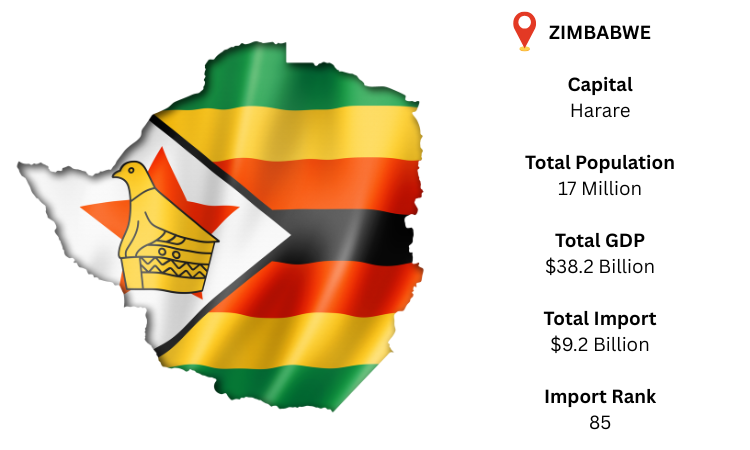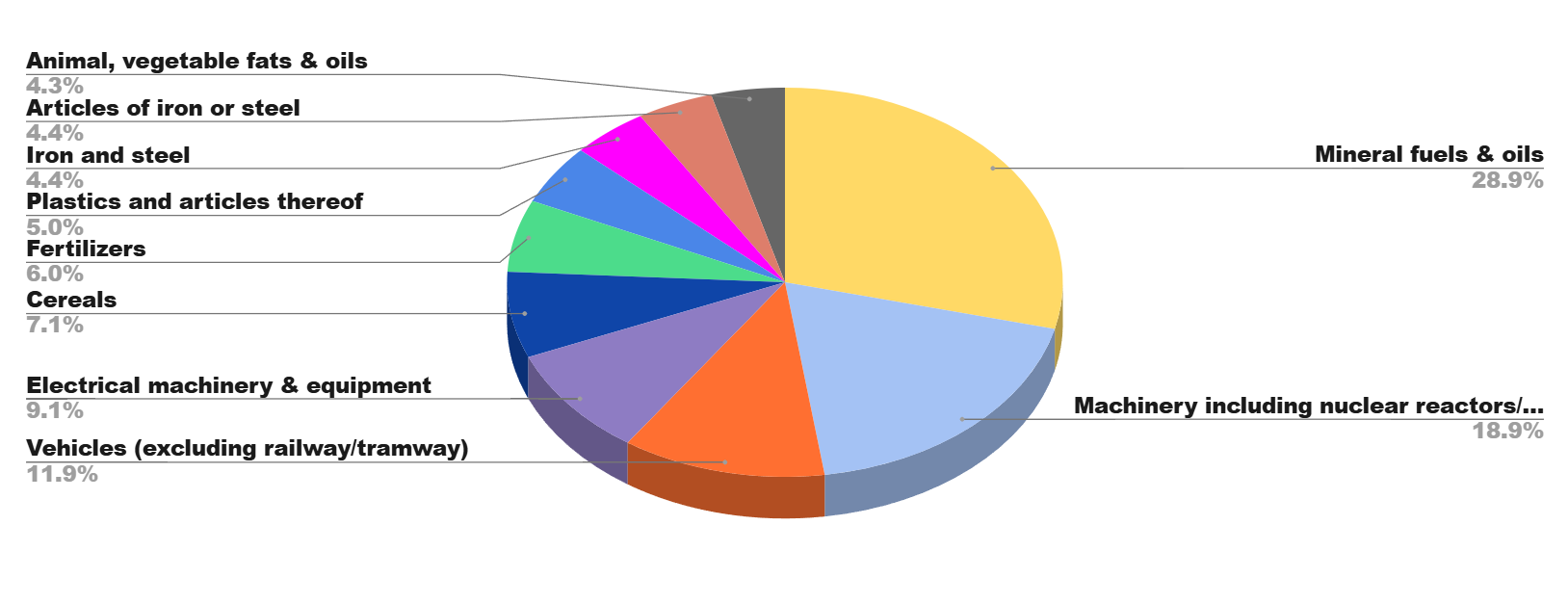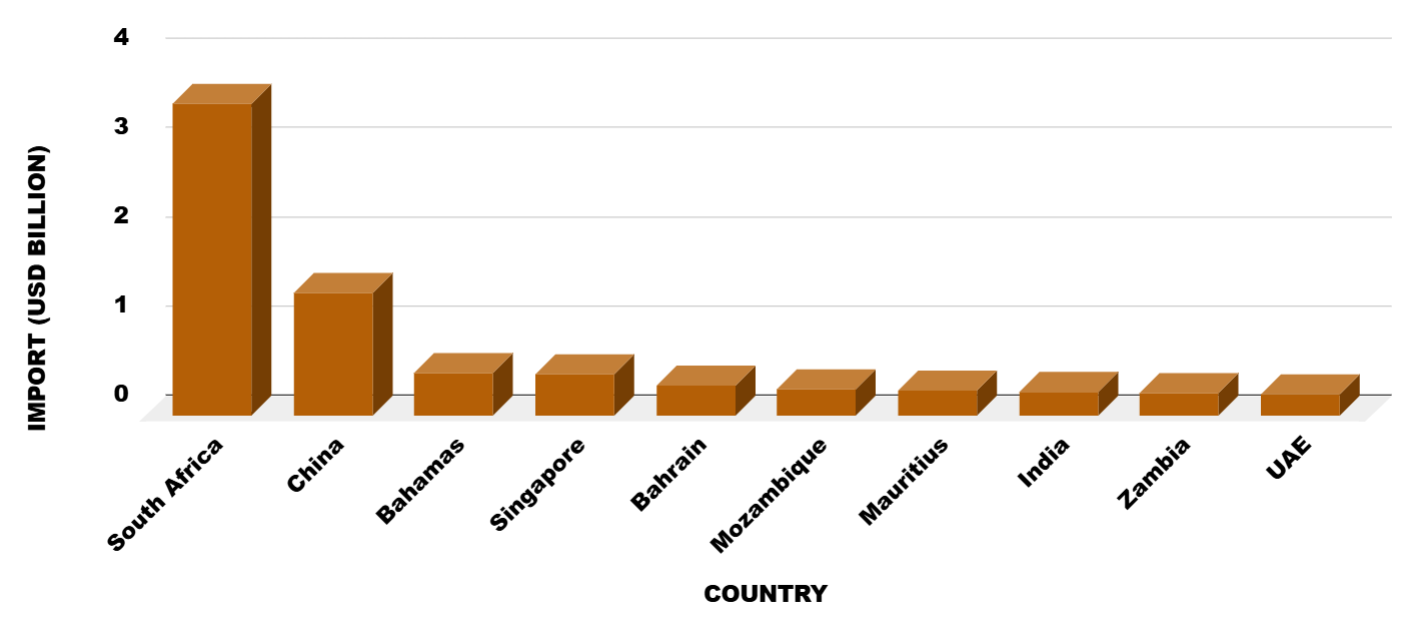With its capital in Harare, Zimbabwe is a landlocked African country that shares borders with South Africa, Mozambique, Zambia, and Botswana. According to Zimbabwe import data, its GDP was around USD 38.2 billion in 2023. A total of around USD 9.2 billion was imported by the nation, which reflected rising demand for food, equipment, and gasoline.



